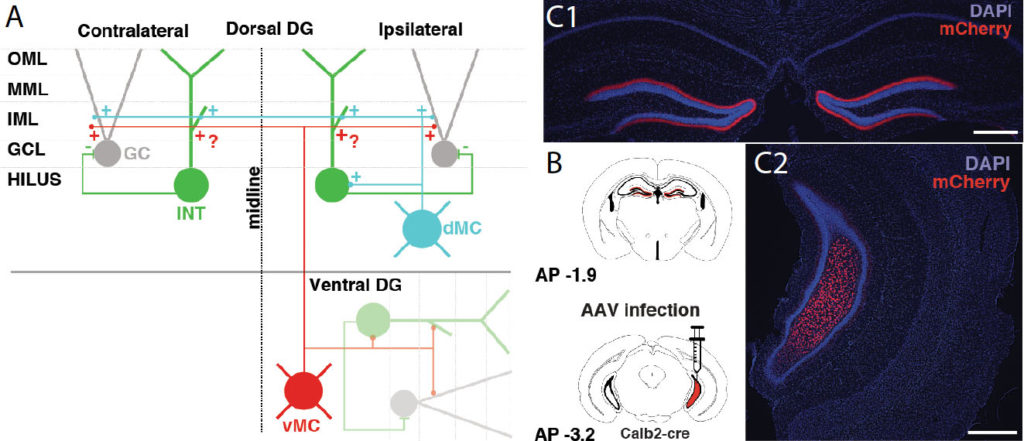This work is a collaboration with the Shigemoto Lab @ IST Austria
Novelty facilitates formation of memories. The detection of novelty and storage of contextual memories are both mediated by the hippocampus, yet the mechanisms that link these two functions remain to be defined. Dentate granule cells (GCs) of the dorsal hippocampus fire upon novelty exposure forming engrams of contextual memory. However, their key excitatory inputs from the entorhinal cortex are not responsive to novelty and are insufficient to make dorsal GCs fire reliably. Here we uncover a powerful glutamatergic pathway to dorsal GCs from ventral hippocampal mossy cells (MCs) that relays novelty, and is necessary and sufficient for driving dorsal GCs activation. Furthermore, manipulation of ventral MCs activity bidirectionally regulates novelty-induced contextual memory acquisition. Our results show that ventral MCs activity controls memory formation through an intra-hippocampal interaction mechanism gated by novelty.
Anatomical depiction of the ventral MC pathway
A. Schematic drawing of the ventro-dorsal hippocampal pathway. B. Viral infection in Calb2-Cre animals shows the large scale bilateral ramifications of ventral MC in the dorsal dentate gyrus (C1-2).
This pathway is extremely powerful in driving the dorsal Granule Cells, just look what happens if we chemogenetically excite it while imaging the dorsal hippocampal granule cells.
If you want to know more, check our pre-print in biRxiv.
